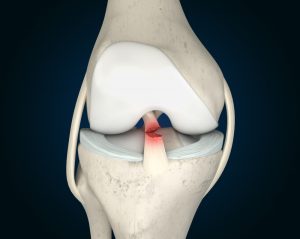This is a great question that I was asked by a family friend recently. ‘I’ve been diagnosed with hip bursitis and a glute strain on the left side of my body.’
She then told me she had seen a physiotherapist for 8 sessions who had done soft tissue work plus ultrasound and the problem still wasn’t getting any better. She was then referred for a cortisone injection which helped for a week and then the problem came back.
The issue is now she’s struggling to walk and in her 50s is a very active, mobile, independent person and wants to stay that way for the next 30, 40, 50 years.
She asked if seeing a Chiropractor for her bursitis issue would be a good idea. My immediate questions were to find out what she has already done? How long it has been there for and what the pain is like? She told me it had been there for six months and it is a dull, achy pain which is constant and then on certain movements can be sharp down the outside of the hip.
What is a bursitis?
Anything with “itis” after it means inflammation. You may have heard of tendonitis, which is the inflammation of the tendon. You may have heard of ulcerative colitis, which is inflammation of the gut and now we have bursitis. It’s an inflammation of the bursa.
Offer: Book a free consultation with West Chiropractic >
What is a bursa?
The bursa is a fluid-filled sac. It separates a tendon from the bone. In this instance, you have the glute muscle that wraps around the outside of the hip and the glute muscle does a lot of work to extend the hip and move out to the side. This aids in walking, sitting to standing position and climbing stairs.
The glute muscle moves a lot and to prevent it from rubbing against the hip bone, you have a fluid-filled sac called the bursa in between to help to soften the contact of the muscle and the bone as it moves around it.
As you can imagine, over time, if there’s a dysfunction or compensation in the body, then the bursa will come under more pressure. As it gets under more pressure, it can get inflamed causing a bursitis.
The fluid-filled sac becomes hot. It inflames the structures around it and it can then start to mimic other conditions in the hip. It can often mimic hip arthritis or even sciatica in some occasions. So it’s important you get to the root cause of the issue.
Offer: Book a free consultation with West Chiropractic >
What causes bursitis?
In the hip, it’s often due to an instability across the hip and pelvis. It’s very common after giving birth or if you sit for long periods of time, the glute activation is out of sequence and often the core is weak, meaning that the glutes don’t work properly and that puts more pressure on the bursa.
If you had an old knee injury or ankle injury, the load transferring through the leg isn’t even and often the glute will have to take up more load to keep the pelvis nice and level. Otherwise, you would often see people walk with a limp. It’s called a Trendelenburg sign where the hip will drop down on one side and the glute on the other side will have to work a lot harder, thus putting pressure on the bursa.
Very often if there’s instability in the foot like a fallen arch, pronated arch, this would cause the pelvis to rock. The knee falls in and then the bursa will become more stressed. If you need help with orthotics, please reply to this blog and we can give you a free assessment.
It’s very rare that a bursitis will occur in isolation. There’s usually a compensation going on in the rest of the body that the bursa is having to take up more stress.
Whenever you seek guidance from a therapist, whether it be a physiotherapist, osteopath, chiropractor, always ensure they’re doing a full scan of your whole body and posture to see how you’re aligned, to see where you can be taking up excess stress through the rest of the body.
How to treat a bursitis?
- Ice is very important to bring the inflammation down. Anything that is inflamed, always putting ice through the area is the first point of call.
- Anti-inflammatories, we prefer natural anti-inflammatories such as omega-3 fish oils, ginger, turmeric. Having these in juices or teas will bring the inflammatory effect in the body down. If you want to take ibuprofen, please do this bearing in mind that they cause detrimental effects to the stomach and only with guidance from the GP.
- Stretching the glute or relieve the tightness on the glute, take the pressure off the area. We prefer the pigeon stretch. Hold this for 30 seconds 3 times a day. Head to our YouTube channel to see a pigeon stretch. Click here for the link
- Tennis ball, using a tennis ball or lacrosse ball in the glute while sitting will mobilise some of the trigger points in the glute muscle and release the pressure through there. This can be very tender so just take care when doing this.
- Getting a full body assessment, seeking help from a professional, understand the root cause of the bursitis to address that, whether it be a knee stability issue, a foot overpronation, a pelvic issue or even something coming from the lumbar spine. Then you can address that issue with correct home care exercise or stretches rather than just trying to put a patch over the symptom.
If you would like any more information on how we can perform a full assessment for you, please click the link below. For January, we have 5 spaces available for our 30-pound offer. Please click here to book yourself in.
Offer: Book a free consultation with West Chiropractic >


